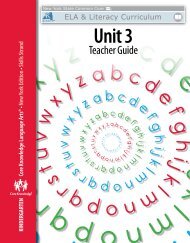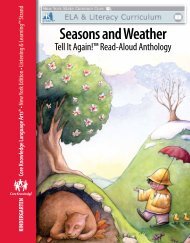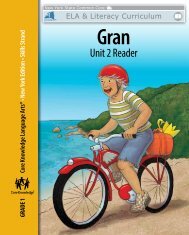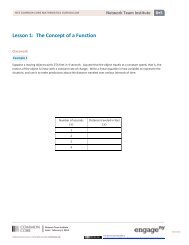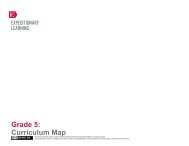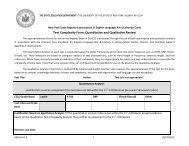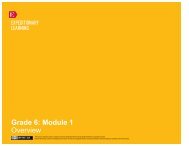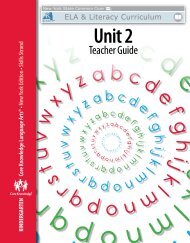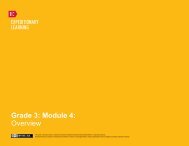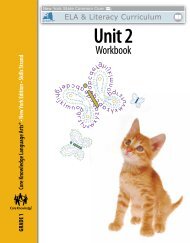Skills Unit 2 Teacher Guide - EngageNY
Skills Unit 2 Teacher Guide - EngageNY
Skills Unit 2 Teacher Guide - EngageNY
You also want an ePaper? Increase the reach of your titles
YUMPU automatically turns print PDFs into web optimized ePapers that Google loves.
We classify the initial sounds in error and the middle sounds in very not as single<br />
r-controlled vowel sounds but as /e/ + /r/. This is perhaps the most complicated<br />
and debatable of the classifications noted here. It is debatable for two reasons.<br />
First, there are some linguists who view this as a single sound. Second, the /e/<br />
+ /r/ combination heard in very can be difficult to distinguish from the /ae/ + /r/<br />
combination heard in hairy. Depending on the dialect, it can also be difficult to<br />
hear a difference between very and vary; marry and merry; and ferry and fairy.<br />
Many people cannot hear any differences in these pairs and therefore regard<br />
the pairs as homophones. Others detect a subtle acoustic difference. In this<br />
program we view /e/ + /r/ and /ae/ + /r/ as separate, not because they sound<br />
different but because they follow different spelling patterns. We noted that<br />
most /ae/ + /r/ words can be sorted into one of the spelling patterns for the /ae/<br />
phoneme. The same is true of /e/ + /r/ words: very can be seen as an example<br />
of the /e/ spelled ‘e’ pattern seen in Betty and red. The word bear can be seen<br />
as an example of the /e/ spelled ‘ea’ spelling pattern seen in bread and head.<br />
This is the classification scheme we use in this program.<br />
Words like very and America pose one additional problem. The letters ‘er’<br />
can stand either for the single phoneme /er/ as in her and letter or for the<br />
combination /e/ + /r/ as in very and America. The program draws attention to<br />
this issue at a later time.<br />
This information about the gray areas concerning vowels and /r/ is provided only<br />
for your background knowledge, to provide a perspective on the philosophy<br />
of the program so you may teach it more effectively. It might also help you to<br />
identify the patterns in the errors students make. You may wish to give students<br />
a general sense that the /r/ sound has a tendency to change vowel sounds when<br />
it follows them—they may need to pronounce some vowel + /r/ words in different<br />
ways in order to read them correctly.<br />
12 <strong>Unit</strong> 2 | Introduction<br />
© 2013 Core Knowledge Foundation



